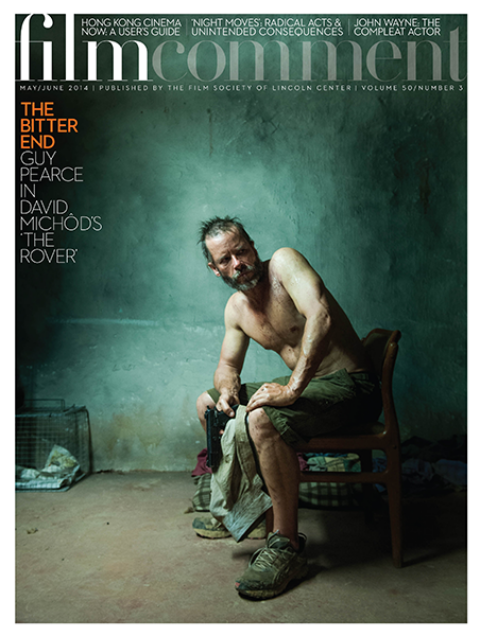Purely through casting, Roman Polanski doubles down on the personal and makes the play-within-a-play narrative structure of Venus in Fur a more twisty hall of mirrors than it appears on the page. Adapted by the director and David Ives from the latter’s 2010 stage play of the same name, the film stars Emmanuelle Seigner as Vanda, a brassy, still struggling but no longer young actress with a dubious resumé, and Mathieu Amalric as Thomas, the writer-director of a play based on Leopold von Sacher-Masoch’s 1870 novel, again of the same name and with a mirror structure much like the film’s.

Given that Seigner has been married to Polanski for 25 years and Amalric could easily pass for the director’s younger brother, one can’t help wondering if the sexual dynamic that develops on the screen, and is indeed the film’s raison d’être, might have something to do with daily life chez Polanski. Since the film is fiction, and therefore evidence of nothing outside itself, one feels guilty for even allowing the thought to cross one’s mind. And yet the casting pushes the fantasy in our faces, much as Vanda pushes herself on Thomas, hovering above him so that her voluptuous breasts, spilling out of her décolletage, overwhelm his field of vision.
Venus in Fur opens amid thunder and lightning, the camera tracking along a desolate Paris boulevard, propelled by the sound of a dissonant cabaret-like polka (Alexandre Desplat’s spare score provides a dark undercurrent throughout). Without missing a beat, it enters a theater and remains there, à huis clos, through the mockingly grotesque conclusion. An expertly staged and edited chamber piece, the film fails only in its last-minute straining for significance. It is the filmmaking that delights, and not the tired reveal that some men long to be dominated by a beautiful woman, nor Vanda’s unconvincing feminist update—that such a woman will oblige if only to prove that the desire for submission belongs to the man himself rather than to the woman’s insatiable quest for power and revenge.

Vanda does not at first appear to be the fulfillment of a fantasy harbored by the intellectual but not particularly introspective Thomas. She blows into the theater, drenched by the storm (seemingly a victim rather than a ruler of nature) just as Thomas is packing up from a long, fruitless day of auditions. Although she claims to have an appointment, her name is not on the call sheet. She does however have a copy of the script, acquired mysteriously since Thomas insists it was not given out to anyone, and by some strange coincidence the same name—Vanda—as the femme fatale of Thomas’s play. Perhaps because he’s intrigued by these unlikely circumstances, and more likely because she is so aggressively insistent on auditioning, Thomas agrees to let her read and, since the stage manager has gone home, to read the part of Severin opposite her.
If the supposed real-life Vanda is a loud-mouthed vulgarian (a French version of one of New Jersey’s “real housewives”), her metamorphosis into the cultivated, insinuating 19th-century courtesan of Sacher-Masoch’s novel stuns Thomas, and makes him hers completely. Not to mention that she comes prepared not only with her own tatty costume and “shiny boots of leather” (Lou Reed is not the source of his play, Thomas insists) but also an 1869 Viennese smoking jacket that fits Thomas perfectly. As Thomas and Vanda work their way through the play, the film becomes increasingly fluid in its shifts between stage fantasy and life as fantasy, and in the power struggle between metteur en scène and actress. Polanski’s Venus in Fur is neither profound nor erotic (at least not for this viewer) but it is wonderfully witty and a generous gift from the director to his two stars. Seigner has the more difficult role—Vanda is written in extremely broad strokes—and if she begins shakily, she eventually finds a place of truth and power. Amalric, as usual, underplays magnificently, even in the gender-fuck finale where he transforms, not into Vanda, per the script, but into Polanski in The Tenant.








